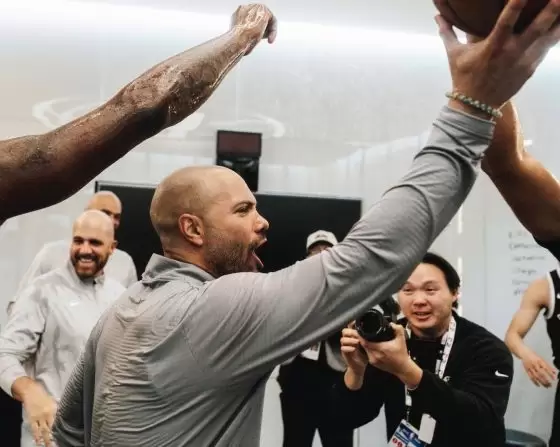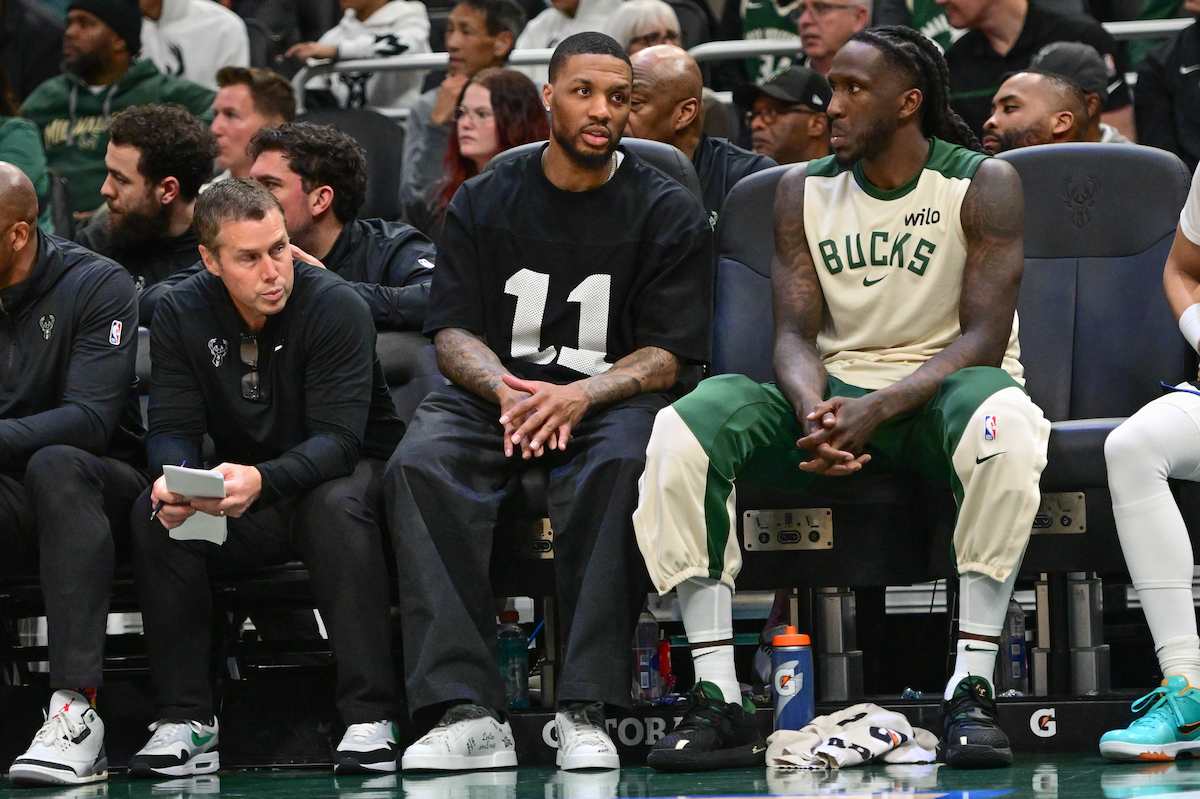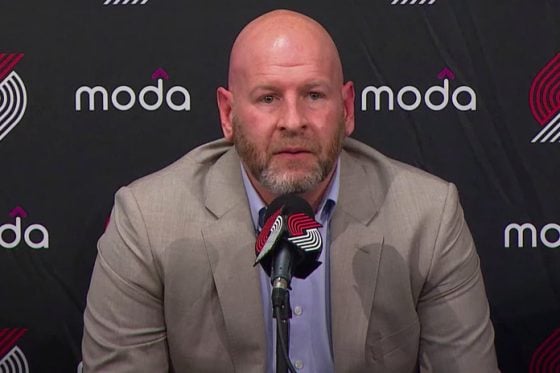We are so back.
We’re not just back, since that would imply that the Celtics merely won the basketball game. At a minimum, I expected us to be back. Had the Celtics not been back, remaining in whatever foreign land they briefly inhabited during Game 2, we would have needed a popular referendum or at least some sort of legislation. But there was another route available, one that would see the Celtics win with conviction and confidence-boosting pride: being so back. And now that’s what we are.
To be so back means that the course has been completely corrected, and the worries of the prior 72 hours have been expunged by clean and simple dominance. On Saturday night, the Celtics instituted a zero tolerance policy for cosmic buffoonery, repeatedly rebuffing the Heat’s efforts to claw their way back into a game that got away from them more quickly than they planned. In short, they put the hammer down on the narratives from Game 2 and told them to shut up.
Photo by Megan Briggs/Getty Images
In fact, Game 3 was such a convincing blowout that it did more than just assuage my concerns, it ushered in a brand-new feeling of optimism going forward. Once again proving how much NBA media—but more specifically myself—are prisoners of the moment, all my concerns that the Celtics might succumb to Miami’s ridiculousness were suddenly gone, replaced by a stronger-than-ever belief in this team’s championship ability.
I told you we were so back, didn’t I?
After Wednesday night’s disaster, I worried that the Celtics were playing without joy, too worried about what would happen if they lost rather than playing freely, a style that would all but ensure victory. Game 1 saw lots of joyful basketball, including but not limited to a parade of threes and Derrick White staring down the Heat bench after canning one. Game 2 introduced real stress, and I was worried the Celtics would crack once again.
But to my surprise, the Game 3 Celtics didn’t come out and play with joy, since they brought something better in their carry-on luggage: intensity and conviction.
Don’t let LeBron James’ statements about going zero dark thirty during the playoffs fool you: players read what the media has to say about them, and there’s no doubt the Celtics felt it every time they got raked over the coals in the last few days. There was a lot to fix about Game 2, but first among them was the total lack of ball pressure and close outs to open Heat shooters.
Analytics will tell you that this Miami team launching threes is actually a pretty advantageous game state for the Celtics, but that’s only true if they aren’t so wide open it might as well be a shootaround. Additionally, allowing a conveyor belt of catch-and-shoot threes makes it so Miami basically never had to dribble the basketball. Without Jimmy Butler and Terry Rozier, this team has one player—Tyler Herro—comfortable putting the ball on the floor and distributing from the point of attack. And even he’s a little sketchy.
In Game 3, the Celtics game plan maniacally committed to blitzing screens and running Heat shooters off the line. No matter what Joe Mazzulla said, Boston was absolutely not going to let the Heat get comfortable from beyond the arc, and they never did. Caleb Martin and Jaime Jacquez Jr., the main perpetrators of Game 2, essentially abandoned the three point line altogether, with Martin taking only four shots and recording a game-low plus/minus of -23.
Everyone was getting in on the party, with all nine Celtics single-mindedly running suicides between the paint and three point line until the Heat simply gave up. The ball pressure was so disruptive that Erik Spoelstra had to yank Duncan Robinson from the rotation after recording a legendary zero points on zero shots in seven minutes. But it wasn’t for a lack of trying; the Celtics just refused him any breathing room.
This game granted me the most glorious gift an NBA team can give their fans: tangible optimism. I’m only 21 years old and generally an upbeat guy, so I’m a terminal optimist anyways, meaning no matter how grim things may look, I usually believe the Celtics are going to figure it out. That’s afforded me exactly zero success in recent years, but I probably enjoyed the doomed series’ more than some others because of my baseless optimism.
But then there’s tangible optimism, where a team offers their fans something real and visually indisputable that forces them to believe their team has what it takes. In Game 3, they showed they still had what brought them to the NBA Finals two short years ago: defense.
Last year—and in Game 1 of this series—it felt like the Celtics crutched on overwhelming their opponent offensively to win playoff games, but didn’t have the same commitment to locking people up like in their 2022 Finals run. Many attributed this to the change in coaching from Ime Udoka to Joe Mazzulla, with the former believing wholeheartedly in foregrounding each game with defense and the latter driven largely by analytics and winning the mathematical battle of each game.
In every oversimplification lies a kernel of truth, but in this case it is just one single kernel. Udoka’s Celtics were defensively dominant, that is until they met Jordan Poole and Stephen Curry and couldn’t adapt their drop coverage, getting flamethrowered in the process. And it’s not as though Mazzulla’s analytics-driven offense actually makes the defense less effective. At some point, the guys just have to lock in and do it.
Additionally, we can’t forget how bad the Celtics offense was at points during that Finals run. Boston was completely unable to score in the half court for what felt like whole weeks at a time, and would become helpless if they stopped running in transition. Mazzulla Ball—along with the introduction of offensive weapon of mass destruction Kristaps Porzingis—has improved that five-fold.
Game 3 showed that that defensive dominance is still alive and well, and if the Celtics can find a rhythm and defend like that consistently, I may have to walk back my claim that I think the Denver Nuggets would win if Boston met them in the Finals. And, despite trying to think of a way to avoid using this cliché for the last four paragraphs to no avail, the Celtics will have to “hang their hat” on defense to actually contend. I hate that phrase.
When Boston looks bad, everything looks impossible. Drives feel like running through hot tar, screens feel like running into brick walls, and threes feel like shooting over the Green Monster back when it still had that ridiculous net on top of it. But foregrounding everything on the defensive end makes all of that easier.
Anyone who has ever played pickup basketball knows the jolt of confidence you get when your opponent is rattled. After my imposing 5’8” frame swatted one of my friends’ weak step-through attempts, he slammed the ball down as hard as he could and shouted… well, you can use your imagination.
I’m really not that good at basketball, but from there on in, it was like I was some amalgamation of Hakeem Olajuwon and Steve Nash. I was strapping dribble handoffs off screens and my much-taller friend and I kept putting my irate defender in the pick-and-roll and forcing him to eat screens like he was Kirby doing that giant inhale thing. Meanwhile, the post hook was falling like you’ve never seen, and I even hit a dream shake. And it all started with one play on the defensive end.
If I can feel the effect of defensive intensity on my offense and teamwork, then imagine how big a boost Al Horford must get from running Caleb Martin off the line like the boogeyman chasing down a child on the naughty list. Or imagine what satisfaction Jaylen Brown must get from stripping Bam Adebayo who was just way too casual on the low block and turning it into a transition slam.
The playoffs are about strategy and execution, but those tactics are also about making the team feel like they absolutely, unequivocally, have this under control. Even in Game 1, when the Celtics simply buried the Heat alive under a pile of three-point gravel, it never felt like they had baseline-to-baseline control. But in Game 3, they had Miami’s entire home floor in their back pockets.






